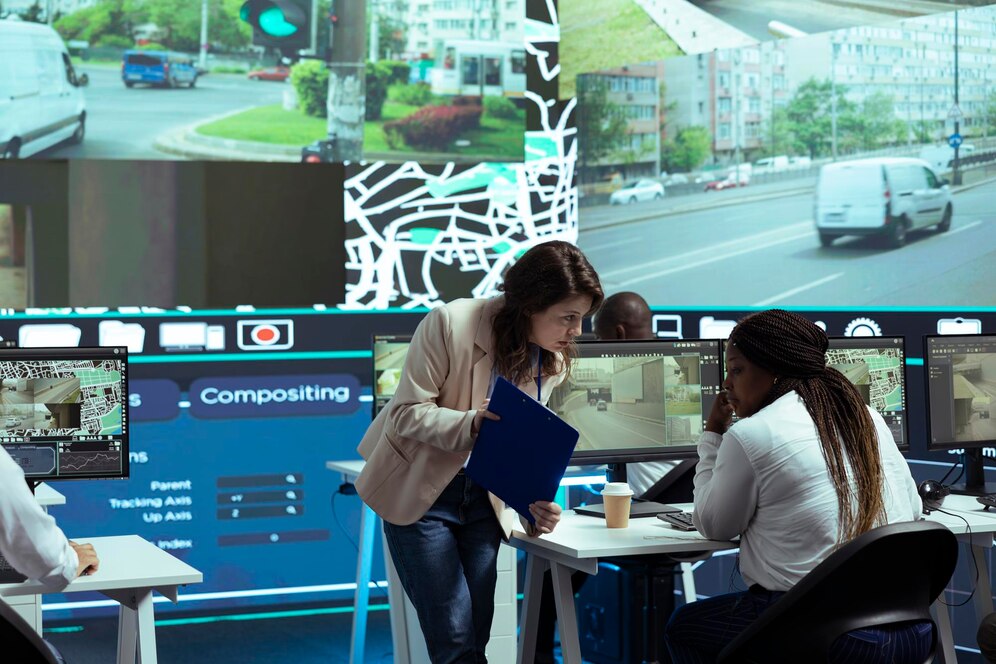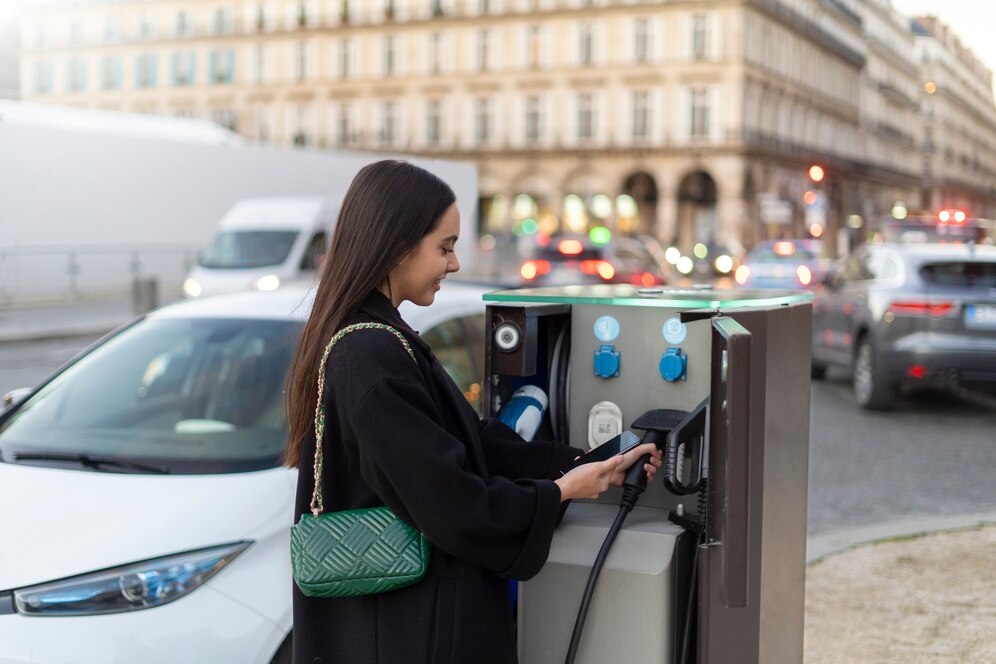
Challenges in Implementing V2X Infrastructure
In the fast-changing world of car technology, Vehicle-to-Everything (V2X) communication is a game changer. It will change how cars connect with their surroundings. As we move toward a future with self-driving cars and smart cities, the need for strong V2X infrastructure is clear. The road to widespread V2X deployment has many challenges. These issues need careful attention to unlock their full potential.
Understanding V2X Communication
Before delving into the challenges, it’s crucial to understand what V2X communication entails. At its core, V2X refers to the exchange of information between a vehicle and any entity that may affect or be affected by the vehicle. This includes:
- Other vehicles
- Infrastructure
- Pedestrians
- Networks
The goal is to boost road safety. We also want to make traffic flow better and help develop autonomous driving technologies.
Key Benefits of V2X Communication
The implementation of V2X infrastructure offers numerous benefits:
- Accident reduction: Vehicles can communicate with each other and with traffic signals to avoid collisions.
- Traffic optimisation: Real-time data helps manage congestion and reduce travel times.
- Environmental sustainability: Efficient driving patterns lead to reduced fuel consumption and lower emissions.
- Emergency response support: First responders can gain priority access and routing information, which can save lives.
- Smart mobility integration: Supports integration with public transport systems and other mobility solutions.
Why V2X Deployment Matters
As cities grow and more people need to get around, V2X deployment is key for smart road tech. It shows a move to a more connected and automated transport network. Here, vehicles can make smart choices using real-time data.
This shift is essential for:
- Improving road safety
- Reducing congestion
- Supporting smart city goals
- Enhancing the overall quality of life for residents
- Enabling new business models in mobility services

Challenges in Implementing V2X Infrastructure
Despite its potential, the deployment of V2X infrastructure is not without its hurdles. These challenges span across several dimensions:
- Technological
- Regulatory
- Economic
- Social
Understanding and addressing these challenges is key to successful V2X implementation.
Technological Challenges
Interoperability
Ensuring interoperability between different systems and devices is one of the biggest hurdles. With many manufacturers and technologies in play, seamless communication across platforms is complex. Although standardisation efforts are in progress, achieving universal compatibility remains a challenge.
Interoperability gaps can slow innovation. They also make it harder to scale V2X systems worldwide. A broken ecosystem can scare off investment. It also makes it harder to connect with other smart mobility services.
Network Latency and Reliability
V2X communication must occur with minimal latency. Delays in real-time applications—such as collision avoidance—can be life-threatening. So, network reliability and low latency are crucial. This needs big improvements in telecommunications infrastructure.
This often means shifting from 4G to 5G networks. 5G can better meet the bandwidth and speed that V2X needs. The roll-out of 5G isn’t the same everywhere. This uneven spread could worsen road safety and traffic management gaps.
Cybersecurity Concerns
V2X systems are vulnerable to cyber threats. Protecting vehicle communication infrastructure from:
- Hacking
- Data breaches
- Malicious attacks
…is critical. Building strong cybersecurity frameworks and updating them regularly is important and never-ending.
Advanced persistent threats (APTs) could compromise entire traffic networks or emergency response systems. In the worst case, cyber attacks on V2X systems might lead to vehicle crashes or major traffic disruptions.
Regulatory and Policy Challenges
Standardisation and Regulation
A lack of unified global standards presents a serious roadblock. Regulations vary by country and region, which complicates development and implementation. A coordinated international approach is necessary to:
- Foster innovation
- Ensure compatibility
- Enable safe deployment
Groups like IEEE and ETSI are pushing for harmonisation. However, differences in national regulations still slow things down. Consistent frameworks are essential for cross-border vehicle functionality.
Spectrum Allocation
V2X communication depends on the radio frequency spectrum—a limited resource. Balancing bandwidth for V2X and other wireless services is a tough regulatory challenge. Policymakers must:
- Assess competing needs
- Create long-term spectrum roadmaps
- Provide clear guidelines for industry stakeholders
Debates exist about using DSRC (Dedicated Short Range Communications) or C-V2X (Cellular V2X) technologies. Both need special spectrum allocations.
Economic and Social Challenges
High Implementation Costs
Deploying V2X infrastructure involves substantial investment in:
- Hardware (roadside units, sensors)
- Software (networking platforms, vehicle systems)
- Integration with legacy systems
For developing nations and rural areas, costs can be especially prohibitive. Innovative funding models and scalable deployment plans are necessary. Public-private partnerships and government subsidies may be essential to jump-start adoption.
Public Acceptance and Privacy Concerns
Gaining public trust is crucial. Key public concerns include:
- Data privacy
- Surveillance fears
- Potential misuse of personal information
Public outreach and transparency are vital for addressing these concerns. Educating citizens about the benefits and protections of V2X can help gain widespread acceptance.
Marginalised communities might distrust new technologies. This distrust comes from past surveillance and discrimination. So, it’s important to create inclusive outreach strategies.
Additional Expert Tips & Common Mistakes to Avoid
To maximise the success of V2X infrastructure projects, consider these expert recommendations:
Focus on Collaboration
Engage a wide range of stakeholders:
- Government agencies
- Automotive OEMs
- Tech companies
- Local communities
Multilateral cooperation ensures that diverse needs and challenges are addressed.
Don’t Skip Pilot Testing
A common mistake is underestimating the value of pilot programmes. Well-designed pilot tests help:
- Uncover technical issues
- Assess user behaviour
- Validate infrastructure design
- Refine deployment strategies
Pilot projects act as real-world case studies. They show decision-makers clear value and encourage more investment.
Advanced Insights / Expert Recommendations
Adopt a Phased Approach
Experts advocate for gradual implementation, beginning with:
- Small-scale rollouts
- Controlled test environments
- Targeted use cases (e.g., emergency vehicle prioritisation)
This helps technologies grow. It also lets developers improve their solutions before using them widely.
It also lets us adjust and enhance training programs for end-users like emergency responders and fleet operators.
Encourage International Cooperation
Global coordination is essential to overcoming regulatory inconsistencies. Governments, industry alliances, and standards bodies should collaborate to:
- Harmonise protocols
- Streamline certification processes
- Promote best practices
Such efforts can fast-track adoption and encourage innovation. Shared rules could let vehicles move smoothly across borders in Europe or North America.
Future Outlook for V2X Infrastructure

The future of V2X is tied closely to broader transportation trends, including:
- Autonomous vehicles
- Electric mobility
- Smart infrastructure
The synergy between these elements can create a cohesive digital transportation ecosystem. Governments and developers need to think about how today’s systems will work with future technologies.
AI and machine learning will become more important. They will help vehicles understand V2X signals better. This way, cars can react correctly in tricky traffic situations.
Driving Forward: Overcoming V2X Deployment Challenges
The challenges in implementing V2X infrastructure are significant—but not insurmountable. We can unlock the benefits of V2X communication by tackling barriers in technology, regulation, economy, and society.
As we advance towards a future of connected vehicles and smart cities, stakeholders must:
- Prioritise cross-sector collaboration
- Embrace phased, scalable deployment strategies
- Address public concerns with transparency and education
- Commit to ongoing cybersecurity and regulatory updates
Policymakers, industry leaders, researchers, and innovators all need to collaborate. They must face V2X deployment challenges together. This teamwork will help build a safer, smarter, and more efficient transport system. The decisions and strategies we implement today will shape the roads of tomorrow—for generations to come.
Public involvement, ongoing investment, and shared standards aren’t just best practices. They are the key pillars of the connected mobility revolution. Let us move forward with purpose, unity, and innovation.